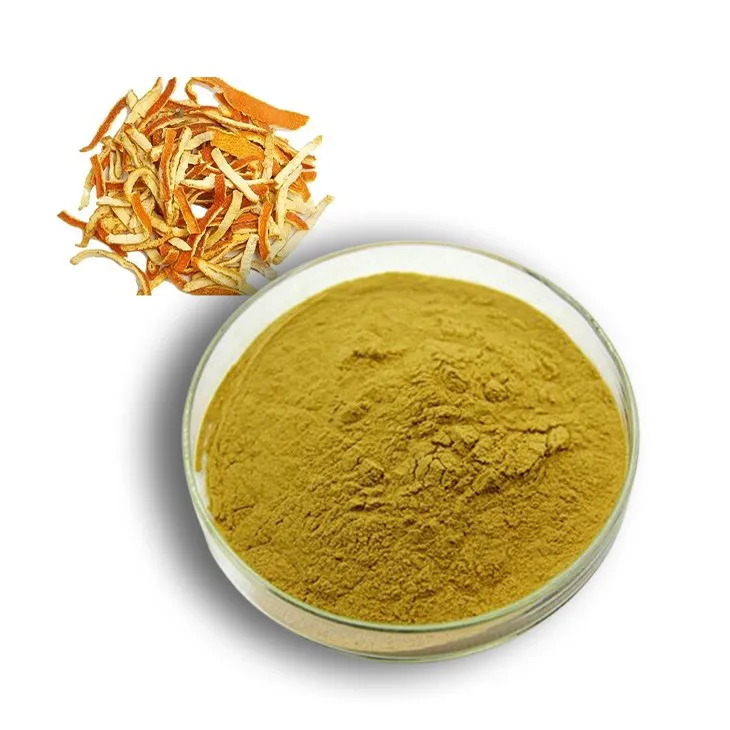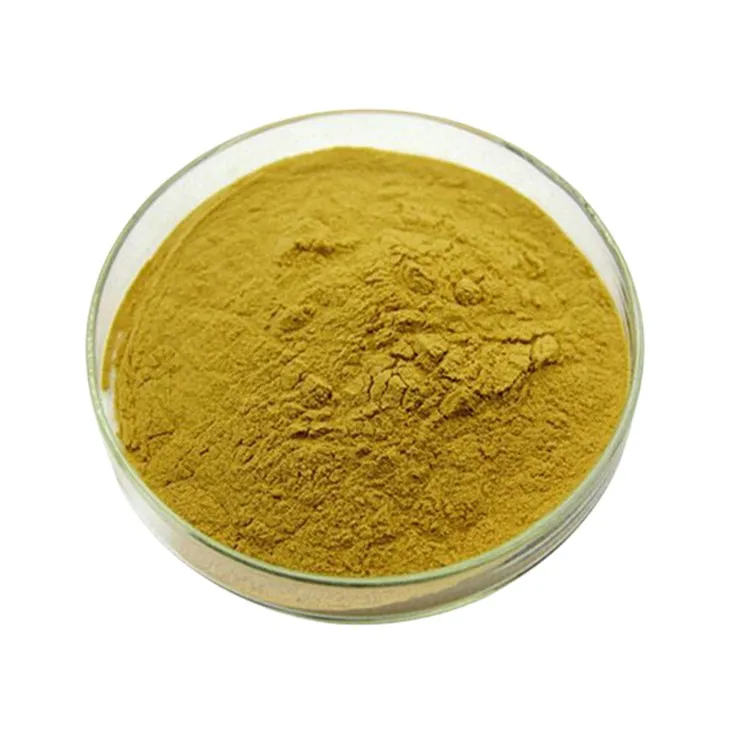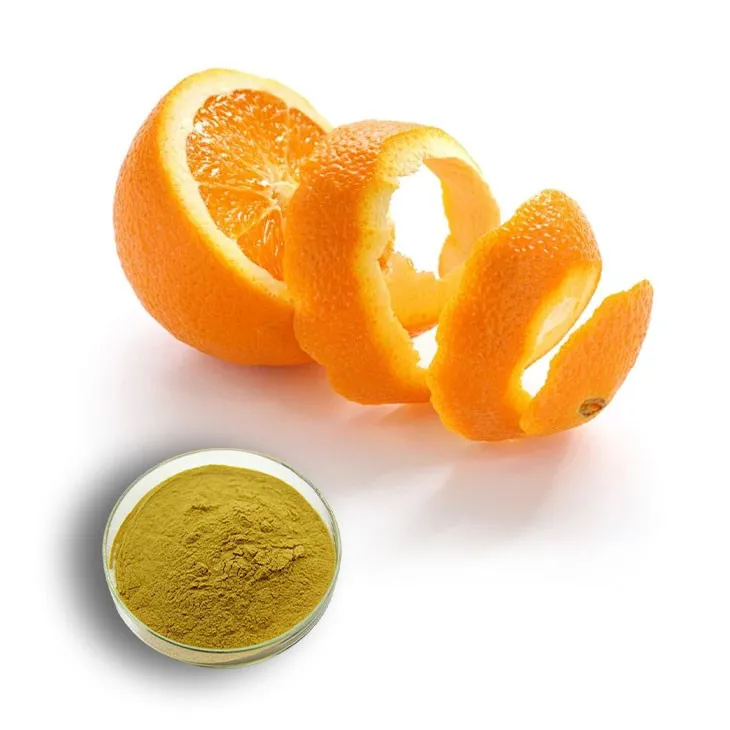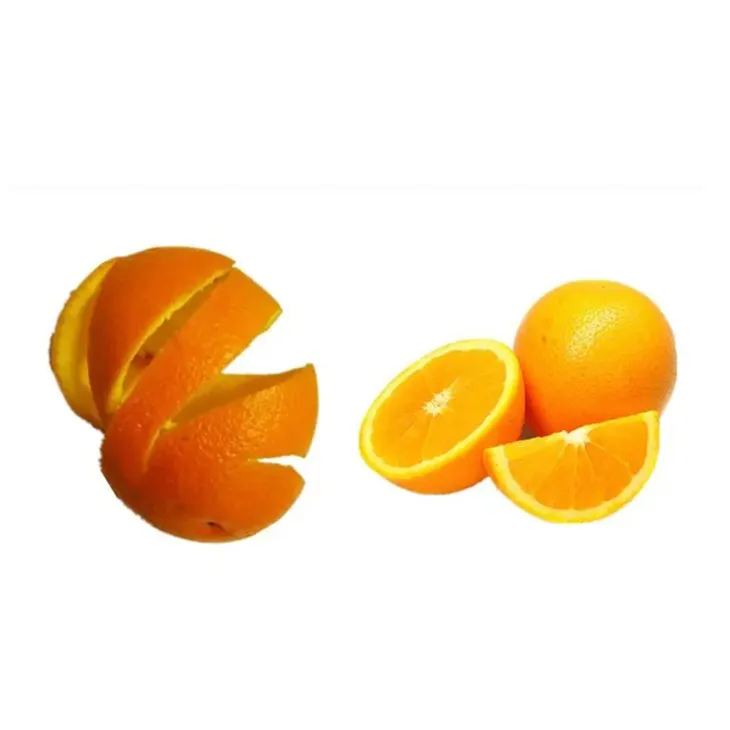- 0086-571-85302990
- sales@greenskybio.com
Title: The Best HesperidinType: A Guide to Selecting the Best Hesperidin
2024-11-12

1. Introduction
Hesperidin is a flavonoid that has been the focus of much research in recent years due to its numerous potential health benefits. It is found in citrus fruits such as oranges, lemons, and grapefruits. As the demand for natural health supplements increases, the market for Hesperidin products has also grown. However, not all Hesperidin products are created equal. This article aims to provide a comprehensive guide on how to select the best hesperidin.

2. Chemical Properties of Hesperidin
Hesperidin is a glycoside composed of the flavanone hesperetin and the disaccharide rutinose. Its chemical formula is C₂₈H₃₄O₁₅. It is a yellow - white powder that is sparingly soluble in water but more soluble in organic solvents such as ethanol and DMSO. Understanding its chemical properties is crucial as it can affect its bioavailability and stability in different formulations.
2.1 Molecular Structure and Function
The molecular structure of hesperidin plays a vital role in its biological activities. The flavanone moiety is responsible for many of its antioxidant and anti - inflammatory properties. The glycosidic linkage to rutinose can influence its absorption and metabolism in the body. For example, the presence of the sugar moiety may need to be cleaved off before the hesperetin can be fully active in some physiological processes.

3. Health Benefits of Hesperidin
Hesperidin has been associated with a wide range of health benefits, which is one of the main reasons for its popularity in the supplement market.
3.1 Antioxidant Activity
As an antioxidant, hesperidin can scavenge free radicals in the body. Free radicals are highly reactive molecules that can cause damage to cells, DNA, and proteins. By neutralizing these free radicals, hesperidin helps protect the body against oxidative stress, which is implicated in various chronic diseases such as cancer, heart disease, and neurodegenerative disorders.
3.2 Anti - Inflammatory Effects
Hesperidin has been shown to have anti - inflammatory properties. It can inhibit the production of inflammatory mediators such as cytokines and prostaglandins. This makes it potentially useful in the treatment of inflammatory conditions like arthritis and inflammatory bowel disease.
3.3 Cardiovascular Health
There is evidence that hesperidin can benefit cardiovascular health. It may help to lower blood pressure by relaxing blood vessels. Additionally, it can improve lipid profiles by reducing levels of LDL - cholesterol (the "bad" cholesterol) and increasing levels of HDL - cholesterol (the "good" cholesterol). This can contribute to a reduced risk of heart disease.
3.4 Immune System Support
Some studies suggest that hesperidin can enhance the immune system. It may stimulate the production of immune cells such as lymphocytes and macrophages, which play important roles in fighting off infections.

4. Extraction Methods of Hesperidin
The extraction method used to obtain hesperidin can have a significant impact on the quality of the final product.
4.1 Solvent Extraction
Solvent extraction is a commonly used method. Ethanol is often the solvent of choice as it can effectively extract hesperidin from citrus peels. However, the quality of the ethanol and the extraction conditions (such as temperature, time, and solvent - to - material ratio) need to be carefully controlled. If not properly managed, solvent extraction can leave behind residues of the solvent in the final product, which may be harmful.
4.2 Supercritical Fluid Extraction
Supercritical fluid extraction, using carbon dioxide as the supercritical fluid, is a more advanced extraction method. It has the advantage of being a cleaner process as carbon dioxide is non - toxic and can be easily removed from the final product. This method can also provide a higher - quality extract with better preservation of the bioactive compounds. However, it requires more expensive equipment and is more technically demanding.

5. Criteria for Selecting the Best Hesperidin Product
When choosing a hesperidin product, several factors should be considered.
5.1 Purity
High - purity hesperidin is desirable. Look for products that clearly state the percentage of hesperidin content on the label. A higher percentage generally indicates a more concentrated and potentially more effective product. However, very high - purity products may also be more expensive.
5.2 Source
The source of hesperidin is important. Since it is naturally found in citrus fruits, products derived from natural citrus sources are often preferred. Organic sources can also be a plus as they are less likely to contain pesticides or other contaminants.
5.3 Extraction Method
As discussed earlier, the extraction method can affect the quality of the hesperidin. Products obtained through supercritical fluid extraction may be of higher quality, but they may also be more costly. Solvent - extracted products can be a good option if the extraction process is well - controlled.
5.4 Formulation
Hesperidin products come in various formulations such as capsules, tablets, and powders. Consider which formulation is most convenient for you. Capsules and tablets are easy to take, while powders can be more easily mixed with food or drinks. Also, look for products with additional ingredients that may enhance the absorption or effectiveness of hesperidin, such as vitamin C.
5.5 Brand Reputation
Choose products from well - known and reputable brands. Brands with a good track record are more likely to produce high - quality products that meet safety and quality standards. You can research online reviews, ask for recommendations from healthcare professionals, or check for certifications such as Good Manufacturing Practice (GMP) certifications.
6. Conclusion
In conclusion, hesperidin is a valuable flavonoid with many potential health benefits. When selecting the best hesperidin product, it is important to consider factors such as purity, source, extraction method, formulation, and brand reputation. By taking these factors into account, consumers can make more informed decisions and choose a hesperidin product that is both effective and safe.
FAQ:
What are the chemical properties of hesperidin?
Hesperidin is a flavanone glycoside. It has a characteristic chemical structure consisting of a flavanone backbone with a sugar moiety attached. Chemically, it is relatively stable under normal conditions but can be affected by factors such as pH and temperature in certain chemical reactions. It is soluble in some organic solvents to a certain extent and has specific spectroscopic properties that can be used for its identification and quantification.
What are the main health benefits of hesperidin?
Hesperidin offers several health benefits. It has antioxidant properties, which can help combat oxidative stress in the body by neutralizing free radicals. It may also have anti - inflammatory effects, potentially reducing inflammation in various tissues. There is evidence suggesting that it can contribute to cardiovascular health, for example, by improving blood vessel function and reducing the risk of certain heart diseases. Additionally, it might play a role in improving skin health and has been studied for its potential in managing diabetes - related issues.
How is hesperidin extracted?
Hesperidin can be extracted through different methods. One common method is solvent extraction, where suitable solvents are used to dissolve hesperidin from plant sources. Another approach is enzymatic extraction, which utilizes specific enzymes to break down cell walls and release hesperidin more efficiently. Supercritical fluid extraction is also an emerging technique, using supercritical fluids like carbon dioxide under specific conditions to extract hesperidin with high purity and minimal solvent residue.
What factors should be considered when choosing a hesperidin product?
When choosing a hesperidin product, several factors should be considered. Firstly, the purity of the product is crucial. Higher - purity hesperidin products are generally more desirable. Secondly, the source of hesperidin matters. Products derived from reliable and natural plant sources are often preferred. Thirdly, look for products with proper certifications and quality control measures. Additionally, consider the form of the product, such as capsules or powders, depending on your preference and ease of use.
Are there any side effects of hesperidin?
In general, hesperidin is considered safe when consumed in normal amounts. However, some people may experience mild side effects such as gastrointestinal discomfort, although this is relatively rare. High - dose supplementation may also interact with certain medications, so it is advisable to consult a healthcare provider, especially if you are taking other drugs or have underlying health conditions.
Related literature
- Hesperidin: A Review of its Pharmacological and Therapeutic Effects"
- "The Chemistry and Biological Activities of Hesperidin"
- "Extraction and Purification of Hesperidin: Current Trends and Future Perspectives"
- ▶ Hesperidin
- ▶ Citrus Bioflavonoids
- ▶ Plant Extract
- ▶ lycopene
- ▶ Diosmin
- ▶ Grape seed extract
- ▶ Sea buckthorn Juice Powder
- ▶ Fruit Juice Powder
- ▶ Hops Extract
- ▶ Artichoke Extract
- ▶ Mushroom extract
- ▶ Astaxanthin
- ▶ Green Tea Extract
- ▶ Curcumin
- ▶ Horse Chestnut Extract
- ▶ Other Product
- ▶ Boswellia Serrata Extract
- ▶ Resveratrol
- ▶ Marigold Extract
- ▶ Grape Leaf Extract
- ▶ New Product
- ▶ Aminolevulinic acid
- ▶ Cranberry Extract
- ▶ Red Yeast Rice
- ▶ Red Wine Extract
-
Aminolevulinic acid
2024-11-12
-
Polygonum Cuspidatum Extract
2024-11-12
-
Natural grape seed extract
2024-11-12
-
Kelp Extract Powder
2024-11-12
-
Cranberry Extract
2024-11-12
-
Tongkat Ali Extract Powder
2024-11-12
-
Bamboo Leaf extract
2024-11-12
-
Shikonin
2024-11-12
-
Artichoke Extract
2024-11-12
-
Sea buckthorn oil
2024-11-12





















